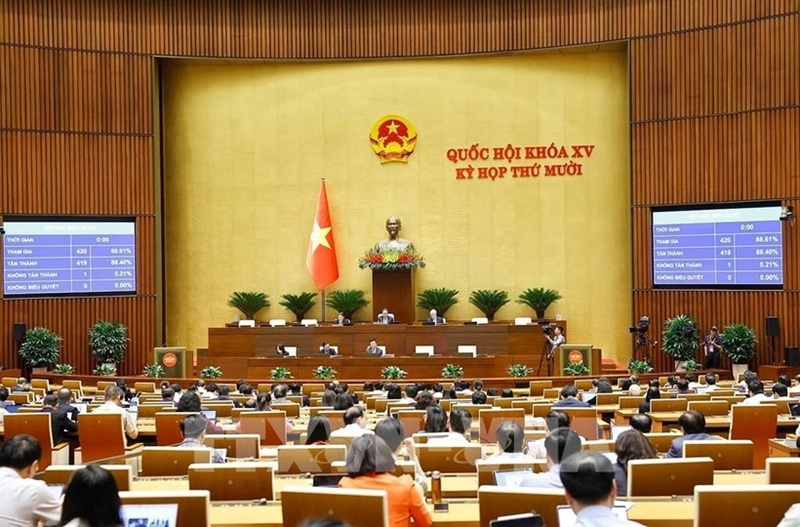Under the resolution, the total state budget revenue for 2026 is projected at nearly 2.53 quadrillion VND (about 96 billion USD), including 1.22 quadrillion VND for the central budget and 1.3 quadrillion VND for local budgets.
The N.A. approved the transfer of 23.83 trillion VND in surplus funds from local budget wage reform reserves as of the end of 2025 to help implement the base salary level of 2.34 million VND per month in 2026.
    |
 |
|
At an N.A. working session |
Total state budget expenditure is estimated at almost 3.16 quadrillion VND, of which 1.8 quadrillion VND will be allocated to the central budget. This includes 238.4 trillion VND for balancing transfers to local budgets, 187.2 trillion VND in targeted supplementary funding, and 53.6 trillion VND for ensuring the base salary level for localities.
The local budget expenditure will total 1.35 quadrillion VND, excluding the amounts transferred from central sources.
The state budget deficit is estimated at 605.8 trillion VND, equivalent to 4.2% of the country's gross domestic product (GDP). Of this, the central budget deficit accounts for 583.7 trillion VND (4% of GDP), while the local budget deficit is 22.1 trillion VND (0.2% of GDP). The total borrowing demand of the state budget in 2026 is projected at 985.8 trillion VND.
The National Assembly requested ministries, central agencies, and local administrations to continue implementing measures to establish funding sources for wage policy reform as stipulated. In 2026, certain revenue items will still be excluded from local budget surplus calculations for wage reform. These items include land rental prepayments, proceeds from the sale of public assets, environmental protection fees on wastewater, and revenues from leasing or selling State-owned houses.
The N.A. also permitted an expanded use of central wage reform reserves to adjust pensions, social insurance benefits, monthly allowances, and preferential treatment for people with meritorious services, as well as to support personnel streamlining. Local wage reform reserves may also be used to implement national social security policies and streamline local staffing structures.
The Government was assigned to review and utilize savings from regular expenditure, particularly from payroll and administrative cost reductions due to the two-tier local administration model, to supplement local wage reform funds.
From 2026 onward, the Government will be authorized to use accumulated wage reform funds to ensure the implementation of salary, allowance, and income policies in line with current regulations.
Source: VNA